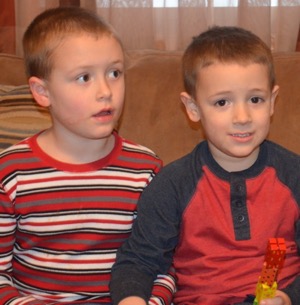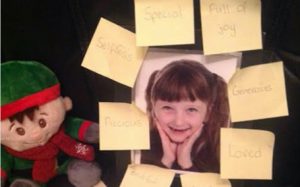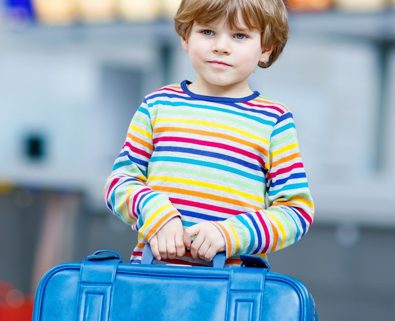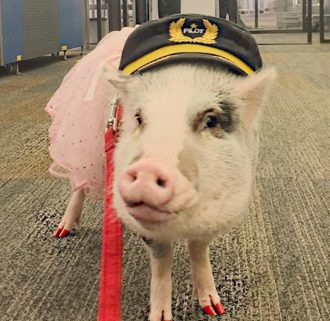As Another Year Draws to a Close…
 As another year draws to a close, I realize that the little piece of my heart that had once seemed forever broken is growing bigger and bigger with each passing year. I have heard that grief and pain get better as time passes, but they don’t. A person’s way of coping gets better, but the pain is forever there. The same is true for a family dealing with a child who has a severe disability. The pain from the daily struggles is always there—we just find better ways to cope with it as time goes on.
As another year draws to a close, I realize that the little piece of my heart that had once seemed forever broken is growing bigger and bigger with each passing year. I have heard that grief and pain get better as time passes, but they don’t. A person’s way of coping gets better, but the pain is forever there. The same is true for a family dealing with a child who has a severe disability. The pain from the daily struggles is always there—we just find better ways to cope with it as time goes on.
When Trenton was first diagnosed at the age of two, my outlook and hope were much bigger and brighter. However, as I watch him grow older and get bigger, there seems to be a dimmer switch on my hopes for the kind of future that I longed for my son.
The years go by. The therapy sessions come and go. Have we made progress during these years of therapies? We most certainly have. However, his progress as a child with severe autism is very slow. The steps and progress are huge for us, but in the autism world, as most of you know, we travel at our own pace and it’s very slow. However, this year we did achieve potty training! That was the hardest task that I have done yet with my sons. It was an 18-month process with lots of tears and meltdowns, but we did it!
I am grateful and forever thankful for each passing year with the progress that we make. But, if I am totally honest, it pulls at my heartstrings. I can’t help but think that, in a way, it gets a little bit worse emotionally as time goes on because he gets older and his disability is more obvious. He doesn’t blend in as well with peers his own age. He is getting older but is still not able to communicate. I could go on with the list, but I am sure many of you understand exactly the areas that I am talking about.
As parents, we want nothing but the best for our children. I know all the sleepless nights we have been through this year. I have witnessed the hard work at OT, ST, and ABA. I am there each step of the way with him and, if I could make the progress go faster, I would. However, at the close of each year, I find myself changing my goals a little bit. I will always hope for the best outcome in life, but there is a time that I have to accept what it is looking like.
So, am I looking forward to what 2017 will bring us? I sure am! In every year that comes and goes, I have met and become aquainted with many amazing fellow autism/special needs parents. We all know that we couldn’t get through our journeys without each other. So, to you, my fellow autism/special needs parents, I wish you nothing but the best in 2017. I hope you and your children are able to make huge strides and achievements this year. We have another full year to see what we can accomplish in our exciting world of special needs.



 The
The 
 Arthur was a single middle-aged man who had lived alone since the death of his mother. His greatest love in life was trains and he knew absolutely everything about them. If you ever bumped into Arthur, he would start talking about trains whether you wanted to or not.
Arthur was a single middle-aged man who had lived alone since the death of his mother. His greatest love in life was trains and he knew absolutely everything about them. If you ever bumped into Arthur, he would start talking about trains whether you wanted to or not.
 My heart is breaking, aching, falling into pieces, cascading downward, landing softly, interspersing with yours. This intricately designed puzzle devoid of instructions, each interlocking piece lavishly stained in colors and patterns, facing upward, beckoning for assembly—it’s complicated. I struggle to place the oddly shaped pieces in harmony with the others; there’s no clear picture of the end mosaic, completely lost in its complexity, vulnerable, apprehensive, feeling inadequate and incapable. Countless pieces isolated, waiting to be orchestrated into a recognizable portrait, unobscured.
My heart is breaking, aching, falling into pieces, cascading downward, landing softly, interspersing with yours. This intricately designed puzzle devoid of instructions, each interlocking piece lavishly stained in colors and patterns, facing upward, beckoning for assembly—it’s complicated. I struggle to place the oddly shaped pieces in harmony with the others; there’s no clear picture of the end mosaic, completely lost in its complexity, vulnerable, apprehensive, feeling inadequate and incapable. Countless pieces isolated, waiting to be orchestrated into a recognizable portrait, unobscured.
 Last month, we let our community know about the Spectrum Toy Store, a toy store located in Chicago that catered specifically to children on the autism spectrum. While we thought it was a fantastic idea for a toy store, we never expected our article to go viral, but it did. More than 1.2 million people viewed it, leading many websites and television news stations to feature the news about the Spectrum Toy Store on their social media sites and channels.
Last month, we let our community know about the Spectrum Toy Store, a toy store located in Chicago that catered specifically to children on the autism spectrum. While we thought it was a fantastic idea for a toy store, we never expected our article to go viral, but it did. More than 1.2 million people viewed it, leading many websites and television news stations to feature the news about the Spectrum Toy Store on their social media sites and channels.
 The latest Christmas tradition has seen elves taking over houses throughout the country. The story goes that Santa leaves one of his elves with a family to watch over the children and make sure they are behaving, with the theory that naughty children will get nothing for Christmas. The twist seems to be that the Elf himself gets up to mischief every night while the children sleep, much to the amusement of the children in the morning.
The latest Christmas tradition has seen elves taking over houses throughout the country. The story goes that Santa leaves one of his elves with a family to watch over the children and make sure they are behaving, with the theory that naughty children will get nothing for Christmas. The twist seems to be that the Elf himself gets up to mischief every night while the children sleep, much to the amusement of the children in the morning. 
 Tonight, as I sit here writing a plethora of lists for our family holiday travel, I posted a poll to a parenting support group on Facebook asking for tips and tricks for surviving holiday travel with special needs kids. And boy, did they ever come through.
Tonight, as I sit here writing a plethora of lists for our family holiday travel, I posted a poll to a parenting support group on Facebook asking for tips and tricks for surviving holiday travel with special needs kids. And boy, did they ever come through.
 Visitors to San Francisco International Airport may already be familiar with the airport’s
Visitors to San Francisco International Airport may already be familiar with the airport’s 
 I could have stopped this title early and just said, “when your child won’t eat.” That is my life, but somehow at Christmas it just seems so much worse. Ask people what they associate with Christmas Day and, after presents, Santa, and perhaps family, many will answer “Christmas dinner.” Advertisers have a field day this time of year, promoting the ideal family Christmas dinner with turkey, roast potatoes, stuffing, and all sorts of vegetables and trimmings.
I could have stopped this title early and just said, “when your child won’t eat.” That is my life, but somehow at Christmas it just seems so much worse. Ask people what they associate with Christmas Day and, after presents, Santa, and perhaps family, many will answer “Christmas dinner.” Advertisers have a field day this time of year, promoting the ideal family Christmas dinner with turkey, roast potatoes, stuffing, and all sorts of vegetables and trimmings.
